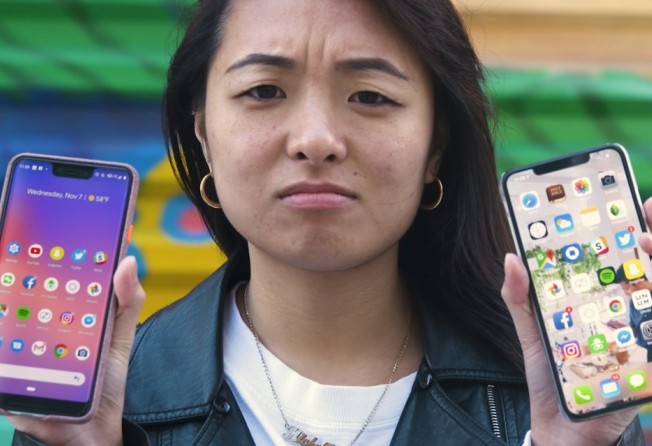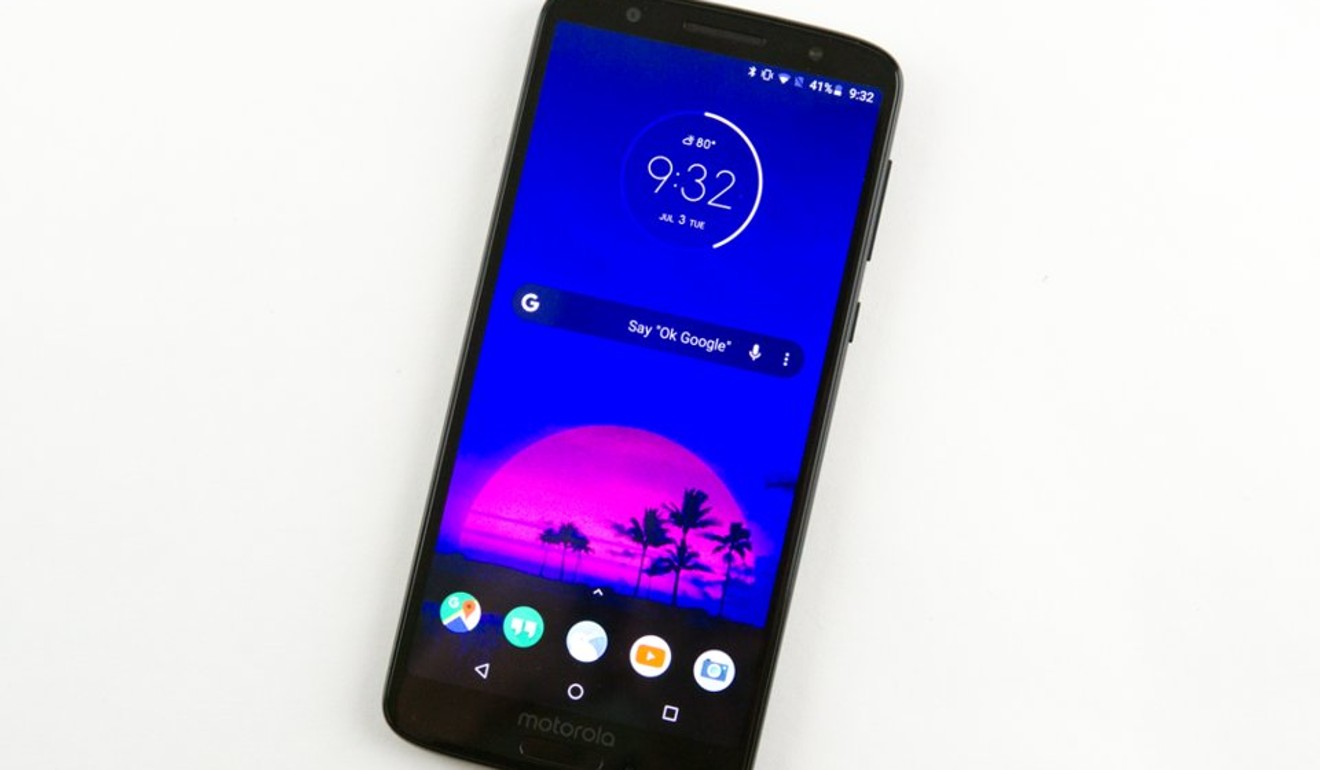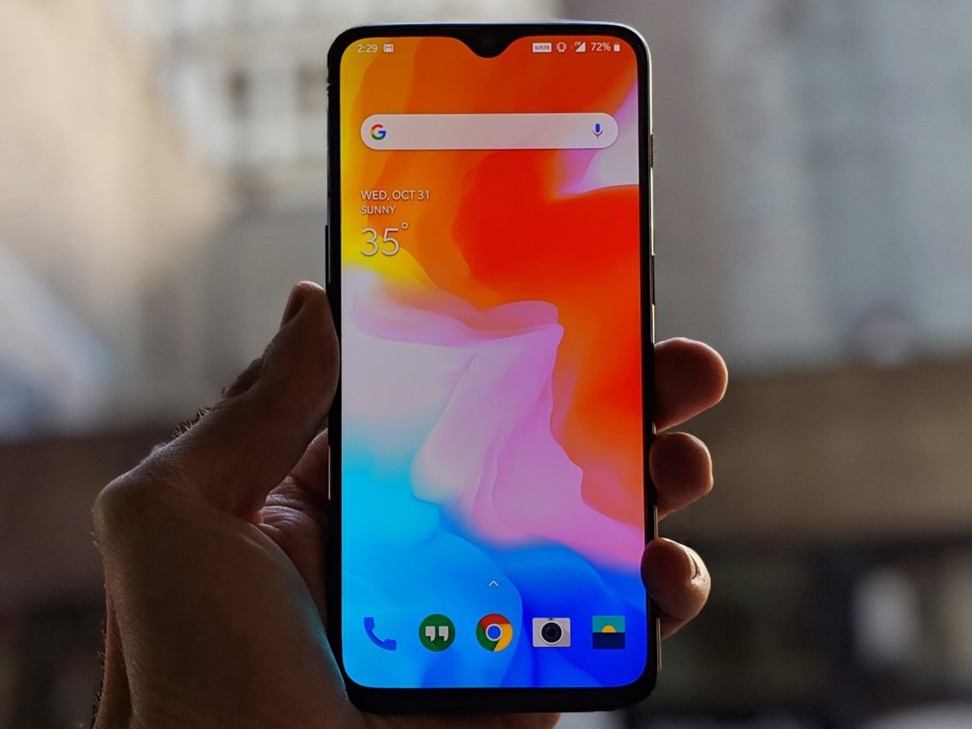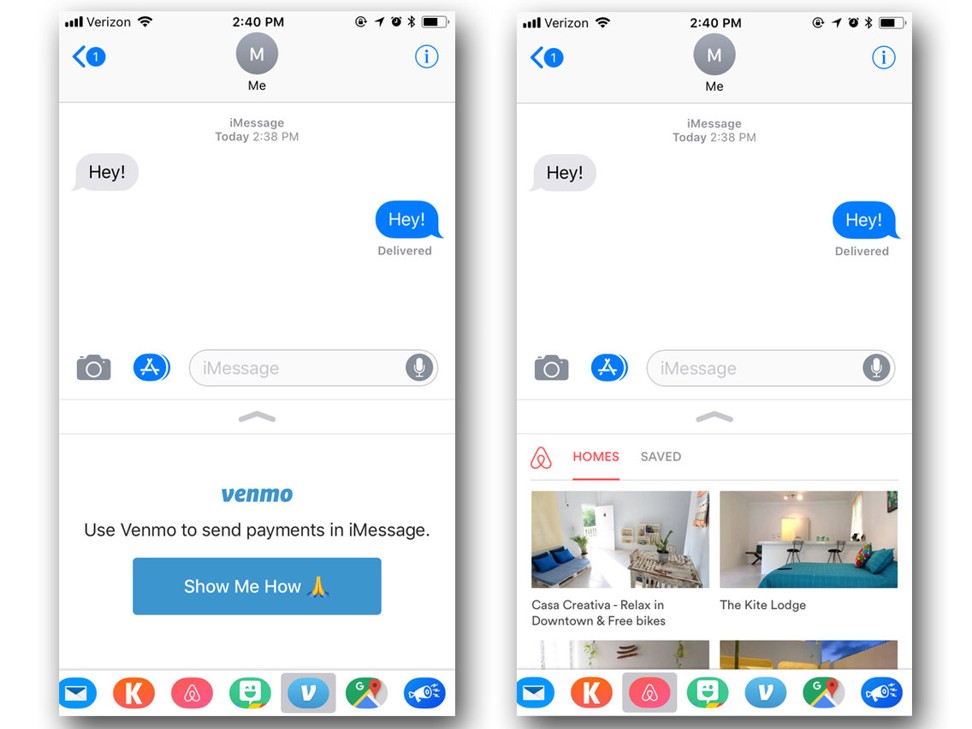Would you regret ditching your iPhone for a rival Android phone?
If you are frustrated by the high prices of and lack of innovation with the latest Apple phones, maybe you should try the OnePlus GT, writes Clancy Morgan

I’m what you might call a Day One Apple user.
I’ve used Apple products and Mac computers for as long as I can remember, from the Power Macintosh my parents had in the family room to my first iBook, to multiple iterations of iPods.
When the first iPhone came out in 2007, I was dazzled.
I saved my earnings from my summer job at a swimming club and bought it a few weeks after it hit the shops.
Like almost everyone else who has ever had an iPhone, I loved it.
Throughout the years, I've upgraded fairly regularly every other year: an iPhone 3GS, 4S, 5S, 6S.
Each time, I toyed with the idea of trying Google's Android operating system.
I played with the top-of-the-line Android phones at the AT&T shop, read a bit about how much more “open” the ecosystem was – and then ultimately stuck with the iPhone.
During this past cycle, though, I held out for as long as possible.
My 6S was still intact after three years, operating with adequate speed for what I needed.
The new bells and whistles on the newest generations of iPhone were rarely that astounding – 3D Touch, Face ID, a missing headphone jack – so why bother upgrading?
Then my battery stopped holding anything resembling a reasonable charge, even after I used Apple’s battery-replacement programme.
Calls and service started dropping regularly for seemingly no reason.
In October, I had to admit: it was time for a new phone.
Newest iPhones feel like less value for money
As I looked at Apple’s options, I had the creeping feeling that there just wasn’t a lot of value to be had. The top-of-the-line options – the iPhone X and its successor, the XS – felt ridiculously pricey, at US$999.
As I travel constantly for work, I needed an unlocked phone that works with any carrier, meaning I wouldn’t be using a carrier's locked-in upgrade programme to pay off the phone in pieces.
I’d be paying the full price up front to be able to use it with any carrier just about anywhere in the world.
Although smartphones these days are more akin to mini-computers with cameras attached, US$900 or US$1,000 for a phone seemed absurd – particularly when it feels as if they rarely last more than two years.
My digital cameras, on the other hand, stay relevant for five years or more.
Apple’s cheaper option at US$599, the iPhone 8, was more or less a marginal improvement over the 6S. The XR, the option right below the XS, costs at least US$750, which is still a lot of money.
My choices seemed to be to pay a lot for a great phone, or pay US$599 for a slightly newer version of the phone I already owned.
I felt as though Apple had forced my hand. I can’t be the only one.
So I started looking at other options from – gasp! – Android phone manufacturers.

First, I tried a budget Android phone and found that even a phone costing less than US$300 can do just about everything an average person wants.
I looked at the US$230 Moto G6, which many people say is the top budget phone right now.
I ordered it on Amazon, because of its easy return policy, and switched over when the phone arrived two days later.
It took me a few hours to get the phone operating the way I like, with the requisite apps and settings tweaked, but truthfully, it was easier than I thought it would be.
The reality is that unless you are trying to run graphics-intensive games, just about any smartphone you pick these days will work perfectly
I had been using Google Photos for backup for the past year or so, my email runs through Gmail, and just about every other major app I use operates in the cloud (Adobe Lightroom, Instagram, WeChat, WhatsApp, Spotify, etc).
All I had to do was download my apps again and log in.
Even at US$230, the phone was much faster than my iPhone 6S and could handle every app I threw at it.
The reality is that unless you are trying to run graphics-intensive games, just about any smartphone you pick these days will work perfectly
As I used the phone over a week, I kept finding little things I loved about Android.
Double-tapping the power button to open the camera app is a game-changer for me as a street photographer; it makes getting elusive shots that much more possible.
The operating system's app launcher – the home screen – is changeable into any configuration you choose, with the ability to drop in widgets for the weather or multiple time zones, as well as a Google search bar.
Any Android user will laugh at this, but for an iPhone user who is used to the endless grids of apps, it is a huge improvement.
Apple hasn’t really updated the look of iOS in years.
You could say it’s a case of “if it ain’t broke, don’t fix it”, but there’s something to be said for trying new ideas.
Apple hasn’t really updated the look of iOS in years. You could say it’s a case of ‘if it ain’t broke, don’t fix it’, but there’s something to be said for trying new ideas
I’ve noticed other helpful tweaks.
Notifications feel more customisable and artificial-intelligence-powered – if you keep dismissing a notification, Google picks up on that and will give you the option to stop showing it.
That saves me the time of going into my settings and individually configuring each app’s notifications.
I'm sure iOS users can sympathise.
At a certain point during my iPhone use, I stopped looking at the notification screen because it was so cluttered with information I didn’t need and never asked for.
And that's without discussing how useful and accurate Google Assistant is.
While it’s not quite at the level of accuracy as Amazon's Alexa, it’s much better than Apple’s Siri (though I admit that I’m still getting used to Assistant).
However, the budget phone’s camera was lacklustre ...

The Achilles’ heel of the Moto G6 was its camera. There was no way around it.
The phone’s camera was not even comparable with my three-year-old 6S’ camera, let alone that of a newer Apple phone.
It’s hard to be cross about that for a US$230 phone, but as an avid photographer, I wasn’t going to be happy in the long term.
That's when I heard about OnePlus from a Business Insider colleague working on the technology desk, Antonio Villas-Boas, who described called the Chinese company’s 6T “the best smartphone you’ve never heard of”.
OnePlus has been building up a loyal base of customers for its high-end yet affordable phones over the past five years
OnePlus has been building up a loyal base of customers for its high-end yet affordable phones over the past five years.
It released the OnePlus 6T in October to rave reviews.
At US$580, it was more expensive than the Moto G6, but still cheaper than just about every iPhone. And reviews were saying it could compete with flagship smartphones such as the iPhone X or the Google Pixel.
I decided to give it a try.
The OnePlus 6T is like a US$900 phone at a fraction of the price

After about three weeks of using the phone, I have to agree with the reviewers: the OnePlus 6T is that good.
It’s fast, has most of the premium features that pricier phones such as the iPhone X and the Pixel have, and even carries some spiffy new technology, such as its in-display fingerprint sensor.
Still, I was worried about how the camera would perform.
Around the time I bought the 6T, my girlfriend bought the iPhone XR.
As we have been travelling over the past month, we have been comparing pictures as we go.
While I wouldn't say the 6T's camera is clearly better than the XR’s, it is a very competitive race.
There are lighting situations where the XR outperforms the 6T, and other times where the 6T outperforms the XR.
Most of the time, it’s a matter of taste.
The 6T’s images tend to be more saturated and have deeper blacks, whereas the XR’s shots tend to have more detail.
Yet then I discovered one of the joys of using Android: the openness of the platform and its community of superfans.
On the OnePlus subreddit forum, I saw that some crafty developers had brought over Google’s proprietary GCam app that on the Pixel has been described as the best smartphone camera around.

While I don’t use GCam all – or even most – of the time, because the app isn’t exactly stable – complications of not being an official, Google-sanctioned version – I’ve been using it for special situations, such as at night.
GCam's night mode combined with the OnePlus 6T's camera blows the XR out of the water. It’s really good.
And just the act of tweaking the phone to my needs felt fun in a way my iPhone hadn’t felt in years.
I’ve found one big problem with switching from iOS to Android ...

I’ve found that the biggest hurdle for an iOS user switching over is iMessage.
Apple did a sneaky, smart thing by embedding its locked-in messaging system in the default SMS app.
As most of my friends and family are on iOS – and everyone is seemingly allergic to the “green bubbles” – I suddenly found myself in the unenviable position of trying to persuade my immediate circle to use WhatsApp.
The more I use Android, the more I am convinced that iMessage is the only major difference between the operating systems.
Of course, there are others, ranging from Apple’s iCloud service to the generally better security of Apple’s OS, but the most visible barrier for most iOS users is giving up iMessage.
I won’t lie: it’s a pain. While I don’t mind WhatsApp, iMessage definitely feels like a smoother and cleaner messaging service.
At this point, if there’s something that’s going to drag me back to iOS in a few years, it will probably be that. Yet for now, I have no regrets about switching. It’s been delightful.
This story by Clancy Morgan was originally published by Business Insider
This article originally appeared on Business Insider .